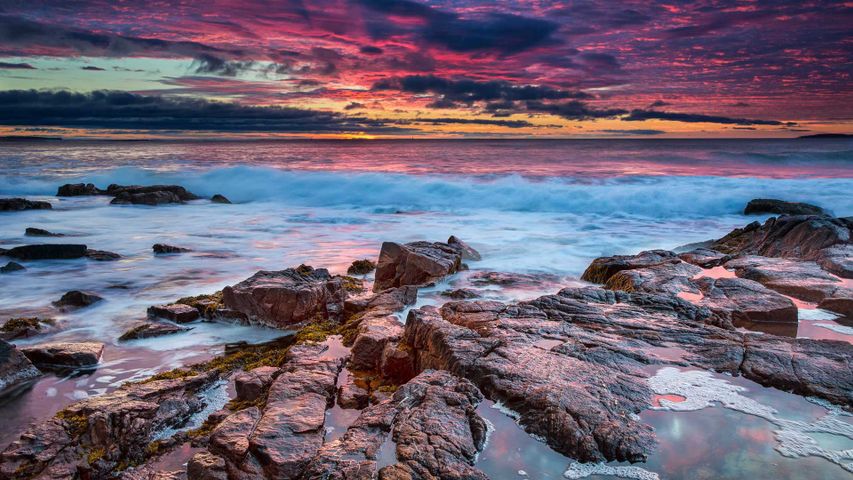Lamplugh Glacier in Glacier Bay National Park, Alaska
© Andrew Peacock/Getty Image
Where ancient ice meets the sea. Glacier Bay National Park and Preserve
Think of this special spot as the place where two different Alaskas meet—its vast icy north and its verdant maritime south. Glacier Bay is named for this area's dominant feature, the rivers of ice that carve the landscape and periodically calve icebergs into the sea. On February 26, 1925, President Calvin Coolidge declared much of the land around the bay a national monument. The protected area was greatly expanded in 1980, when a 3.3-million-acre expanse of glaciers, fjords, rainforest, coastline, and mountain peaks was named a national park and preserve.
Pictured here is Lamplugh Glacier, one of the relatively few tidewater glaciers in the park; the vast majority are found inland. Lamplugh is known for its intense blue color—ice and water absorb the red wavelength of white light and transmit blue light, which is what we end up seeing. The thicker and more pure the ice, the more blue it appears.
Related Images
Bing Today Images





 View from the cupola of the International Space Station above the South Pacific Ocean
View from the cupola of the International Space Station above the South Pacific Ocean
 Polar bear cub, Churchill, Manitoba, Canada
Polar bear cub, Churchill, Manitoba, Canada
 Sandstone hoodoos, Bryce Canyon National Park, Utah
Sandstone hoodoos, Bryce Canyon National Park, Utah
 Alpenglow on Half Dome, Yosemite National Park, California
Alpenglow on Half Dome, Yosemite National Park, California
 Medieval towers in Mestia, Upper Svaneti, Georgia
Medieval towers in Mestia, Upper Svaneti, Georgia
 Ribblehead Viaduct and Ingleborough mountain, North Yorkshire, England
Ribblehead Viaduct and Ingleborough mountain, North Yorkshire, England
 La Brecha de Rolando, Ordesa y Monte Perdido National Park, Spain
La Brecha de Rolando, Ordesa y Monte Perdido National Park, Spain

